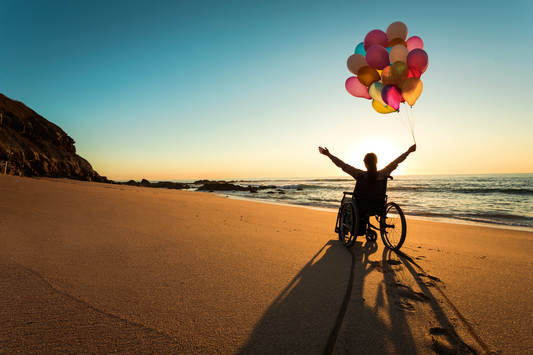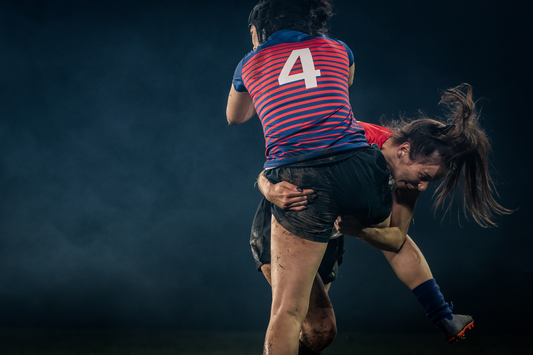First Aid For Burns
As Aussies, we all love a good fire pit or camp fire, especially on our long weekends!
Easter holidays generally see a spike in burns, especially in kids from camp cooking, fire lighting and toasting marshmallows.
This blog is to ensure you are equipped to quickly respond to burns using current first aid methods which reduce pain, speed healing and reduce scarring.
Click here to get your free fact sheet to help you with burns first aid quickly, and a free burns first aid e learning module!
Forget outdated advice. Current best practice in first aid emphasizes the "4 C's" when providing first aid for a burn:
1. Cool the Burn: Instant Relief for Longterm Benefit
This is the core action you can take and should be done straight away.
Sooth the burn with cool running water for at least 20 minutes.
This helps to stop the burning process, eases pain, and minimises damage to the tissues below the skin. This step is key for fast healing and to reduce scarring.

How to do it right:
It's really important to remember, “cool thepart, not the person”
Use cool tepid (not icy) running tap water, be sure to create a gentle flow over the affected area.
For burns where running water isn't available, dip the burnt area into any cool water source you can find, whether it is a cattle trough, dam, creek or bottled water.
When clothing is stuck to the burn, don't try to remove it. Instead, cool the burn with the clothing in place and let the nurses at the emergency centre treat appropriately, as pain relief and sometimes sedation will be needed.
This approach ensures you don't cause more damage to tissue, and create opportunities for nasty infections.
Why it works:
Cooling effectively” washes” heat out from the injured tissue, preventing the burn from penetrating deeper and causing extensive damage. This simple step can significantly impact healing outcomes.

2. Cover the Burn: Protection for Healing
Once the burn has been cooled for a minimum of 20 minutes, creating a barrier to infection and further irritation is vital for fast healing.
How to do it right:
Use a clean, wet, non-stick dressing to cover the burn.
Modern burns first aid modules will contain sterile polyethylene burns dressings in a variety of sizes.
Burn gel dressings are perfect for covering the burn, after cooling, while being transported to emergency care.
Gladwrap or cling film is also preferred over cloth, as this is relatively clean, will not stick to the burn, and allows medical professionals to assess the burn without needing to remove a dressing which may have become stuck.
Be sure to “drape” not wrap burns, as the affected area will swell, and we need to ensure an exit for residual heat from the burn, but also created by swelling from tissue damage.
A sterile dressing is ok protection, but a wet clean cloth can serve as a short term solution if a sterile one isn't immediately accessible.
It's important to avoid using sticky adhesive bandages directly on the burn.

For minor burns, leaving them uncovered might be considered if clothing won't rub against them, but generally, covering offers better defense against contamination.
This current first aid treatment for burns supports the body's natural healing processes.
Why it works:
Covering the burn acts as an importantl barrier against bacteria and air, both of which cause pain and delay healing.
A non-stick dressing such as custom made polyethylene burn sheets ensures that removing it later won't cause further damage to the injured skin.
3. Comfort the Person: Reassurance reduces pain.
Burns are intensely painful and emotionally frightening. Providing reassurance and comfort is the basis of all responsible first aid.

How to do it right:
Encourage regular breathing to assist with pain. Thats right, oxygen is an analgesic (pain reliever)!
Keep the person warm and comfortable, particularly if they show signs of shock (pale, cool, clammy skin, rapid and weak pulse, and rapid breathing).
Burns patients can become unstable very rapidly, especially if they have extensive burns, and they have had their entire body cooled, instead of just the burnt area.
Remember, the more extensive the burn, the more complex and critical the patients situation is.
Offer confident calm reassurance, appropriate to the patients age and culture and stay with them until help arrives if needed.
Why it works:
Managing pain and anxiety helps the patient cope with the injury more effectively. Never underestimate the impact of reassurance on a patient's mind and vital signs.
4. Call 000: When should a burn be treated in hospital?
Recognising when a burn requires professional medical attention is impportant for ensuring the best healing result.
Not all burns can be safely managed at home.
When to call for help
(Dial Triple Zero (000) for emergency services or go to an emergency centre):
- If the burn is bigger than a 20-cent coin.
- If the burn affects the face, neck, hands, feet, or genitals.
- If the burn is deep, affecting all layers of the skin.
- If the burn is the result of an electrical or chemical incident.
- If the person is experiencing difficulty breathing.
- If the person has other significant injuries.
- If the person is a young child or elderly individual.
- If you have any doubt about the burn's severity.
Why it's important:
Severe burns require specialised medical treatment to prevent serious complications such as infection, shock, and significant scarring.
Prompt professional intervention can dramatically improve long-term recovery.

Australian Essential: The seriousness of sunburn
In Australia, we're acutely aware of the sun's intensity.
It’s important to recognise that sunburn is still a burn, and needs to be treated with the same degree of care.
Sunburn is a very common type of burn, and while it might feel less critical than a burn from heat, repeat sunburn significantly increases the risk of skin damage, melanoma and other skin cancer.
The "4 C's" are relevant for the first aid of sunburn:
- Cool: Apply cool compresses or take a cool shower to soothe the burnt skin.
- Cover: Protect the burnt skin from further sun exposure by wearing loose-fitting clothing and seeking shade.
- Comfort: Use aloe vera gel or a mild, fragrance-free moisturizer to soothe the skin. Over-the-counter pain relievers can help manage pain and inflammation. Remember to stay well-hydrated by drinking plenty of water.
- Care: Monitor the sunburn for any signs of a severe reaction, such as extensive blistering, fever, chills, or intense pain. If these occur, seek medical advice.
Remember, prevention through sun-safe practices is always the best approach – slip, slop, slap, seek, and slide!
This aligns with our understanding of the unique challenges of the Australian environment.
To ensure the reliability and alignment of our information with Australian best practices, we reference the following reputable organisations:
- Australian and New Zealand Burns Association (ANZBA): The leading authority on burn care in our region, offering comprehensive resources on prevention, first aid, and management. https://www.anzcor.org/home/first-aid-management-of-injuries/guideline-9-1-3-first-aid-for-burns/
- Healthdirect (Australian Government): A government-funded platform providing reliable health advice and information, including first aid protocols for burns. https://www.healthdirect.gov.au/symptom-checker?gad_source=1&gbraid=0AAAAADGXj2adlWcckadm98NYB4yfVZkhq&gclid=Cj0KCQjw_JzABhC2ARIsAPe3ynr7PA3wUXKglFq9tFD7-XItdrRmKRlCN5k_jaJUe2TAgzBXFI-qWtUaAvzuEALw_wcB
- Royal Life Saving Society - Australia: While focused on water safety, their resources often include valuable general first aid advice relevant to injuries that can occur in various settings, including aquatic environments where burns might happen. https://www.royallifesaving.com.au/
- The Sydney Childrens Hospitals Network https://www.schn.health.nsw.gov.au/burn-injuries-factsheet
By understanding and applying the "4 C's" of burn first aid, you can take confident and effective action to minimize damage and promote faster healing.
Remember, for serious burns, always seek professional medical help.
Being prepared with the right training and a quality, locally packed first aid kit from Assurance Training & Sales is an important step to ensure the safety and well-being of yourself and those around you, no matter where you are.















